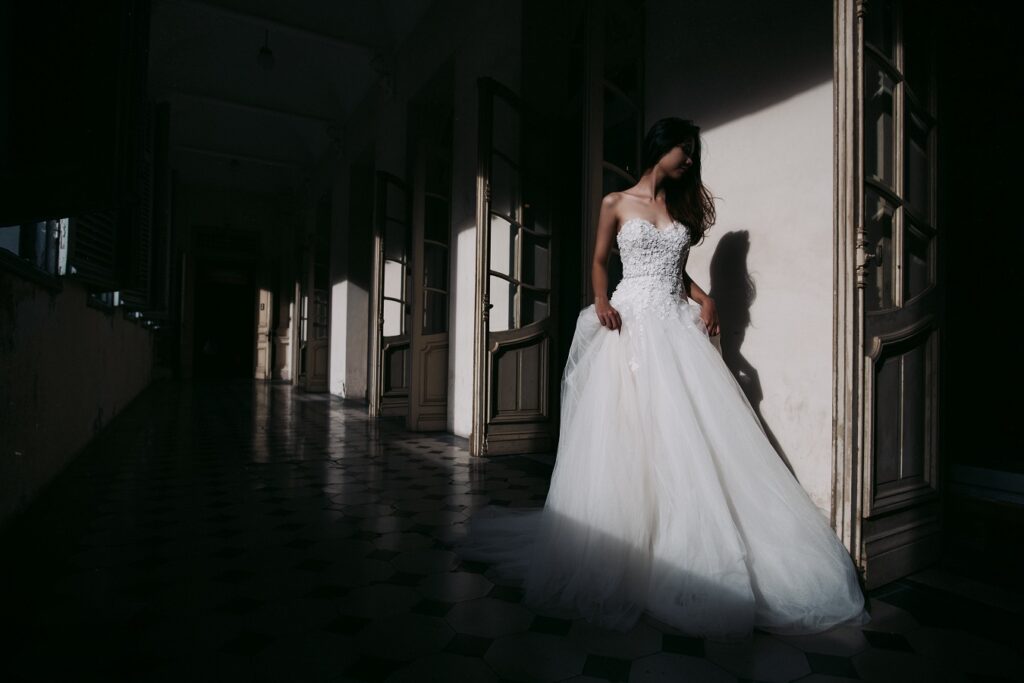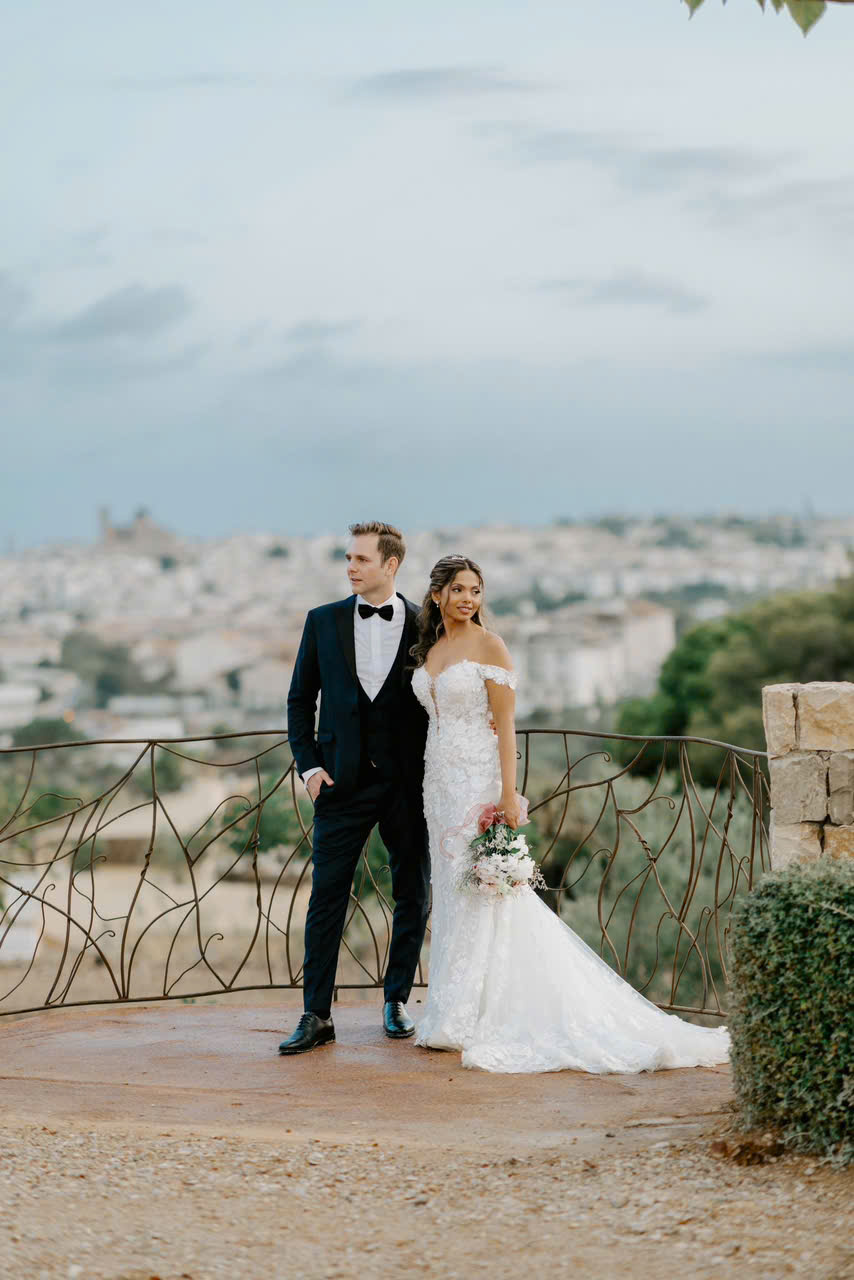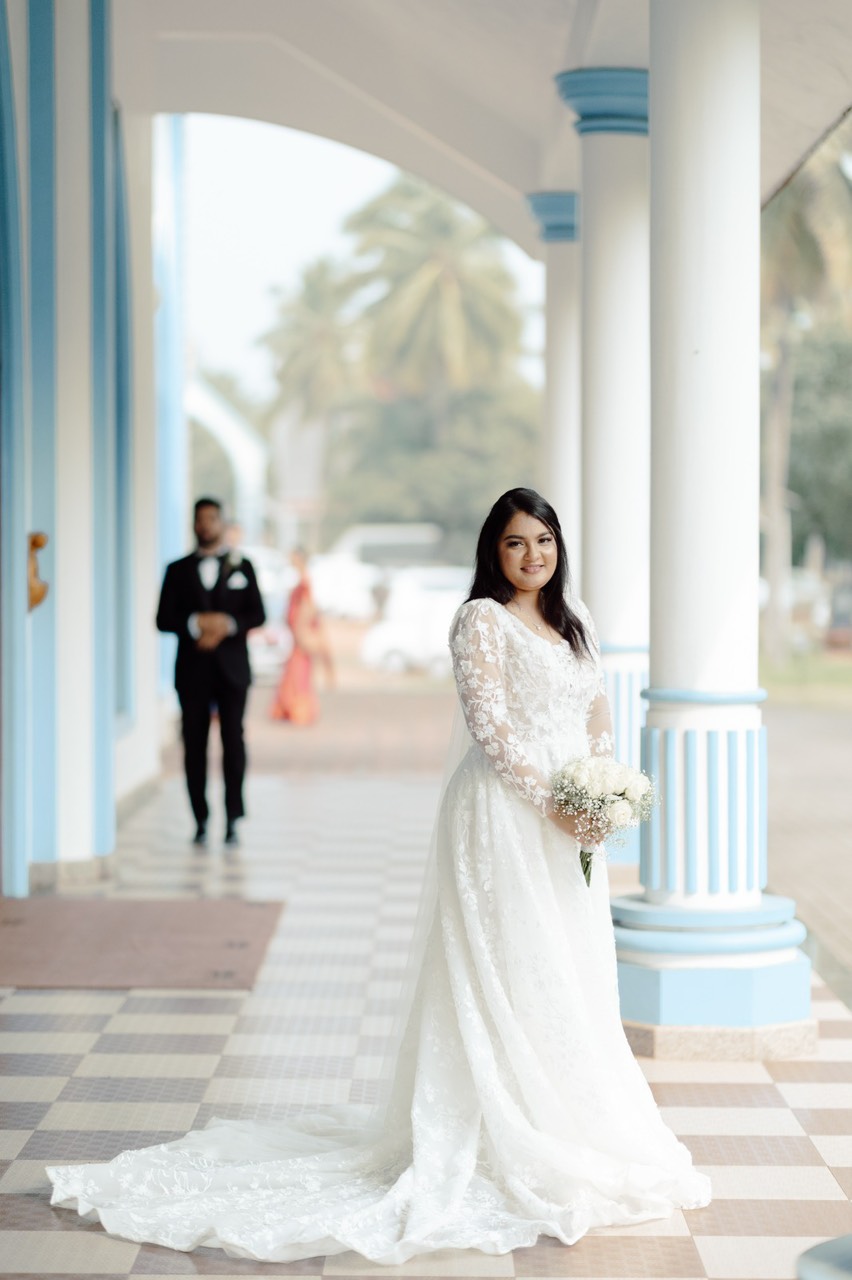Sticking With One Style
“Ninety percent of our brides leave with something completely different than what they had in mind when they walked in,” said DeMarco. Bringing in pictures of dresses you like is a good start, but if your consultant recommends something different, give it a try. It’s impossible to tell what a dress will look like on your body just from seeing it on a hanger. “If a bride is fuller in the hip area, she might have a mind set that she can’t wear a fitted dress,” says DeMarco. “However, what she may not know is that a more fitted dress would show off her curves, fit beautifully, and make her appear more slender as opposed to covering up.”
Buying a Dress You Don’t Love
“The biggest mistake I’ve seen brides make is settling on a dress because someone influenced them to purchase it instead of going with her heart,” said DeMarco.
This is why it’s so important to choose your shopping companions wisely. “Many people that may accompany the bride will look at each gown and decide if it’s best for them—not for the bride whom they should be helping,” said Lash.
If you find yourself liking a dress but also having doubts, or if you’re feeling pressured from a part of your entourage or a salesperson to make a purchase, it’s okay to go home empty-handed, sleep on it, and return at a later point if you’re still dreaming about the dress.
Trying On Dresses You Can’t Afford
You see a stunning gown a mannequin that’s way out of your price range, but you want to try it on just for fun. What’s the harm? “It can lead to heartbreak and disappointment,” said Lash. “You need to be able to afford anything you try on.”
Make sure you are completely clear on your budget before you hit the salon—and make sure that the salon you choose respects your budget. One of the top complaints Lash hears from her brides is that other salons showed them dresses that were out of their respective budgets. “We have a strict policy in place to keep the customer within budget, which makes her happier with the entire process,” said Lash. “Happy bride equals happy life for bridal shop employees!”
Not Accounting for Extra Costs
Let’s say you have $2,000 set aside for your attire. That doesn’t mean you can buy a dress with a list price of $2,000. Alterations typically cost extra, and you may also be charged tax and delivery, so don’t max out your fashion budget on just the dress. “Almost every gown will need some alterations,” said Gesinee. Whether it’s something, small like a hem, or something major, like taking in (or letting out) the bodice, it can add up. You’ll also need to account for undergarments, shoes, a veil and/or hair accessories, jewelry, and any other accessories you’ll want to complete your bridal look.
Not Choosing Your Store Wisely
If you’re a plus-size bride, call ahead to see if your desired store carries a sizeable amount of plus-size samples—not all do. Otherwise, your only option is to play “paper dolls” to get an idea of what a style would look like on you, said Gesinee.
“It is very hard to determine fit by holding up a gown to your body,” said Lash. “If a bride loves one of our gowns in a size 12, we will find one with an exact or similar fit in her size to try on.”
Also, make sure that your store is an authorized retailer for the designer you’ve selected, said Gesinee. If the retailer isn’t authorized to sell that particular designer, there’s a good chance that you won’t receive an authentic gown. That means that the designer won’t stand behind it if anything is wrong. To find out which stores are authorized in your area, check the individual designers’ websites or call the number listed.
from Nicole with Love





